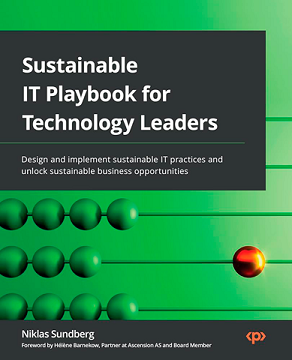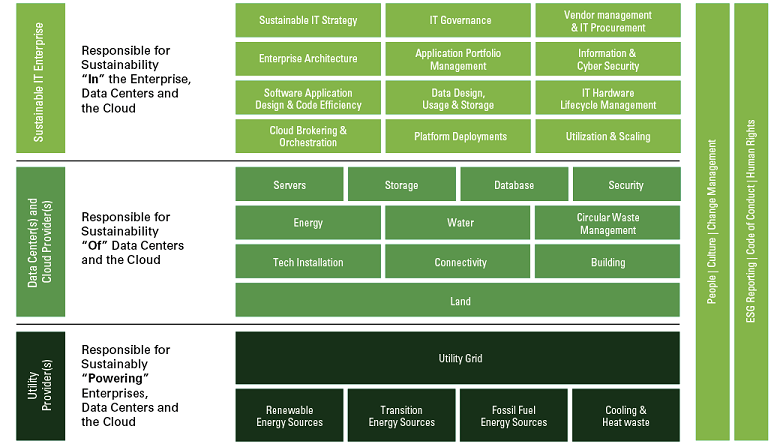Considering the fact that in the last couple of years more and more European countries are faced with the growth of populistic political parties that are downplaying or even ignoring the impact of climate change, I was interested to see to which extent authors writing about sustainable IT have anticipated this “political climate change”.
To get a better understanding, I read several books attempting to cover sustainable IT. For this review, however, I want to discuss specifically the book Sustainable IT Playbook for Technology Leaders by Niklas Sundberg.
In his preface, Sundberg recognizes that sustainability within the IT organization is often disconnected from the broader sustainability discussions. In this book, he wants to bridge the gap, by providing practical guidance for IT organizations to obtain a better insight in their sustainability footprint and the potential ways of reducing this footprint.
Like many other books discussing sustainability, this book starts with quite an extensive elaboration on the environmental challenges we are facing as humankind. Although such a lengthy description may be useful for newcomers and novice readers in this field, I would prefer to see a more condensed version being incorporated in the second chapter, in which the rise of sustainable IT is explained.
The author introduces the IT sustainable reference model, which is definitely a useful umbrella for a good understanding of the remainder of the book. However, the link in this model to data centers suggests that individual organizations can only influence their IT sustainability agenda to a limited extent, especially if their data centers haven been abolished and outsourced to IT/cloud service providers.
Figure 1. Sustainable IT reference model (source: Sundberg, 2022) [Click on the image for a larger image]
This being said, the author does a thorough job in describing the steps for organizations as concrete as possible. For example, in Chapters 7 and 8, extensive examples are included how to calculate your carbon footprint. On the one hand this is helpful, on the other hand I personally find it rather distracting from the overall storyline and would prefer to have this explained in the appendix.
Personally, I found the last part of the book the most interesting as these chapters (e.g., Chapter 10) provide guidance in how organizations can put their “Sustainable IT” strategy in practice, by starting with the sustainability maturity model allowing organizations to determine their maturity level, followed by concrete steps how to detail the various components of their strategy.
There are two major topics that, in my view, are insufficiently addressed:
- To become a real sustainable organization, you need to apply a network approach. Without working closely with your suppliers and customers, it will be very challenging to achieve your sustainability goals. In Chapter 8, the author provides some views on sustainable IT vendor management. However, he remains on the surface and does not give me the guidance I am looking for on how to steer the entire supply chain to sustainable behavior.
- Although the book is from 2022, I would expect a broader view on the impact external factors, like politics, can have on the sustainability agenda of organizations. The author does cover external factors to a certain extent, but in my view, this could be more extensive.
So although the book has some downsides to me, I would recommend it to all IT leaders who are interested in getting a better understanding of how sustainability in IT can be applied practically.
As the author rightly stated: “We are at a critical point in human history. Humanity is under threat, but all is not lost. We can take action.” (Or as I would say: we must take action.)
Sundberg, N. (2022). Sustainable IT Playbook for Technology Leaders: Design and implement sustainable IT practices and unlock sustainable business opportunities. Packt Publishing.





